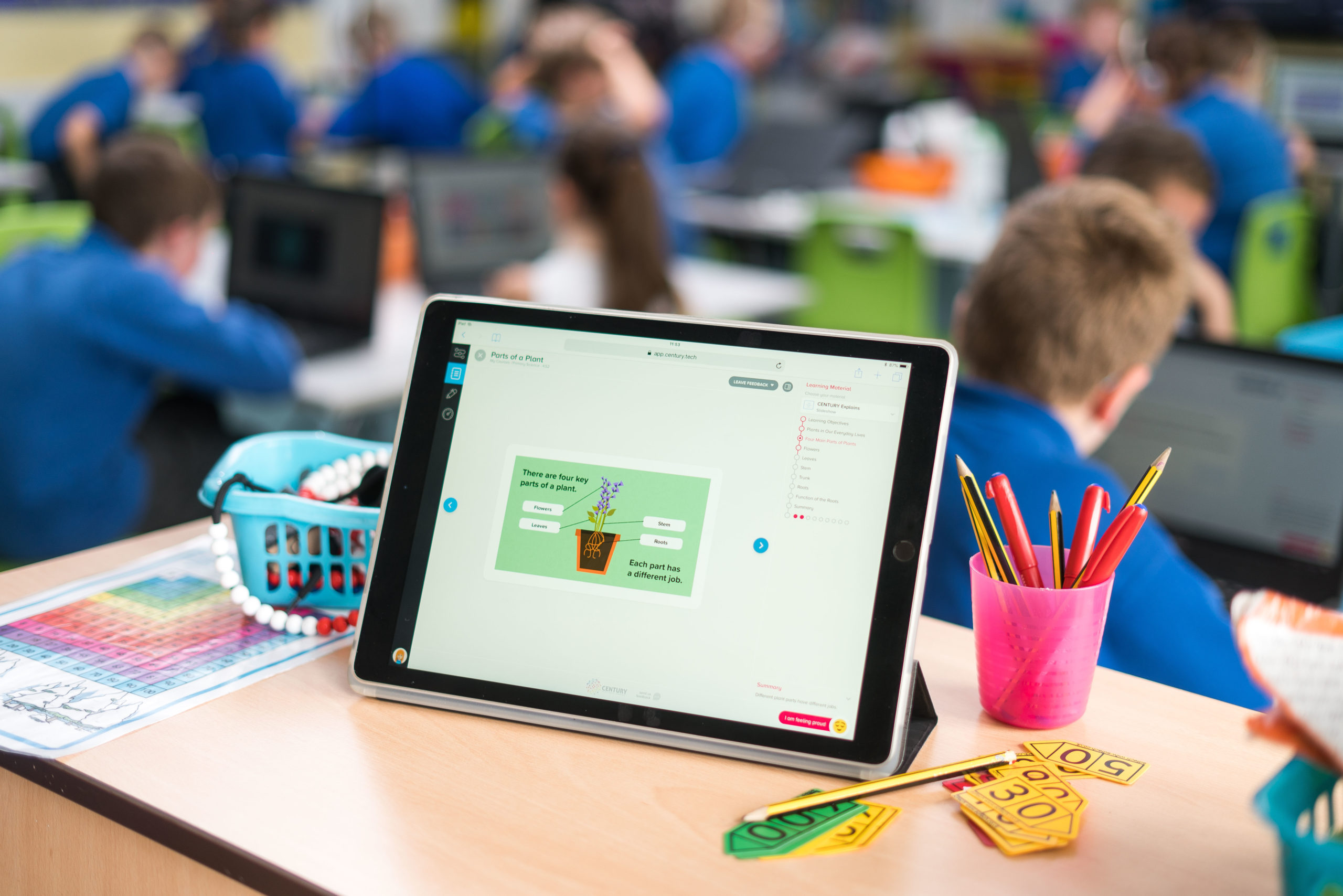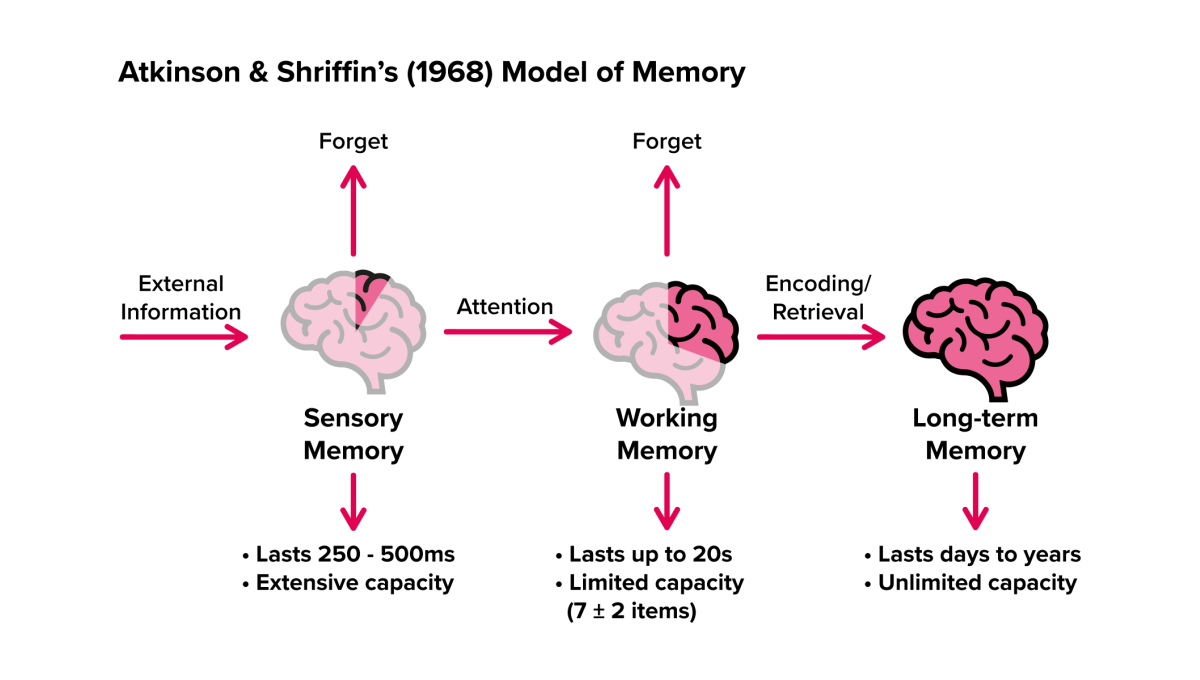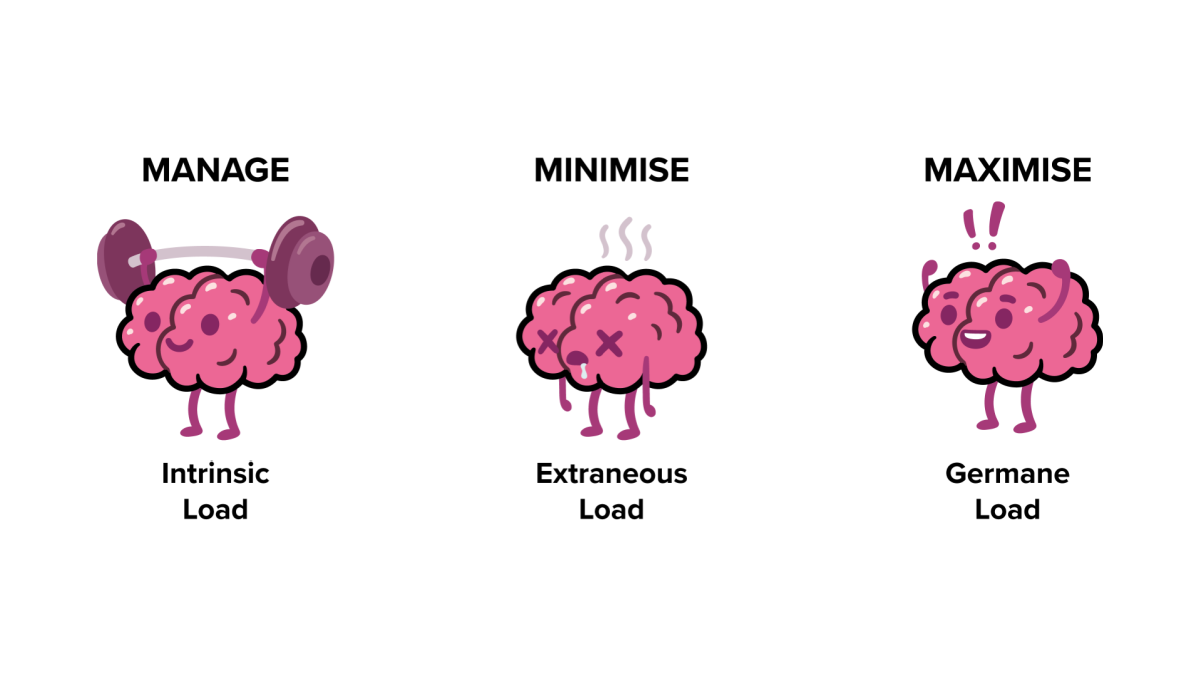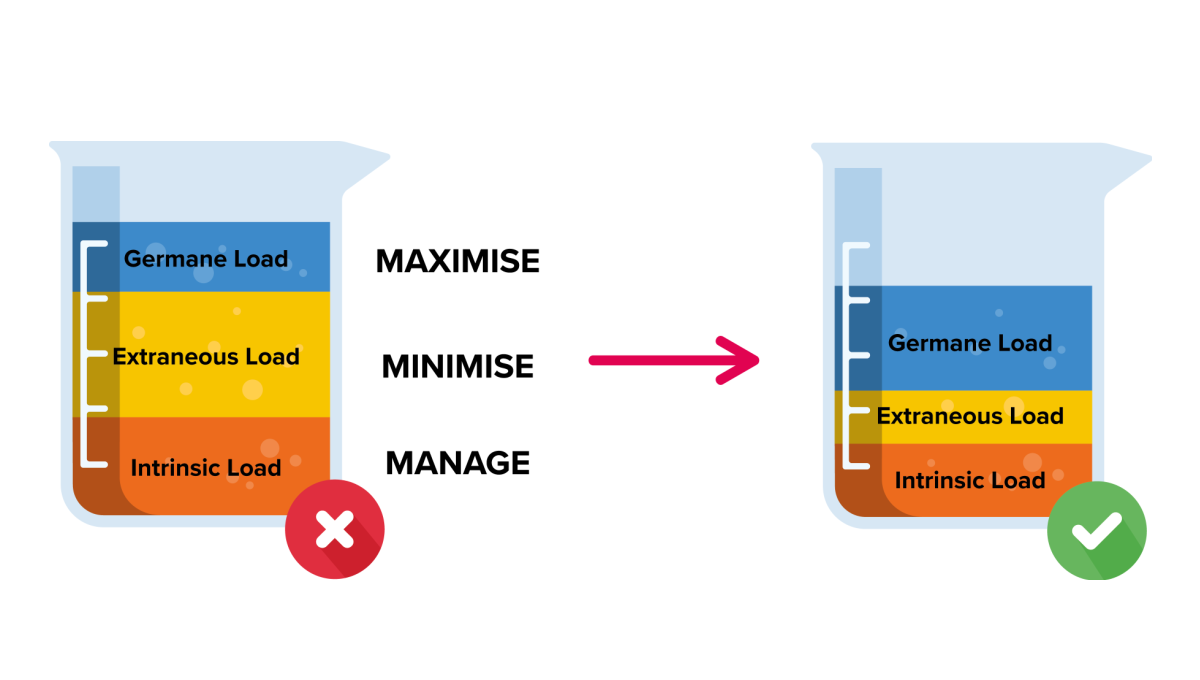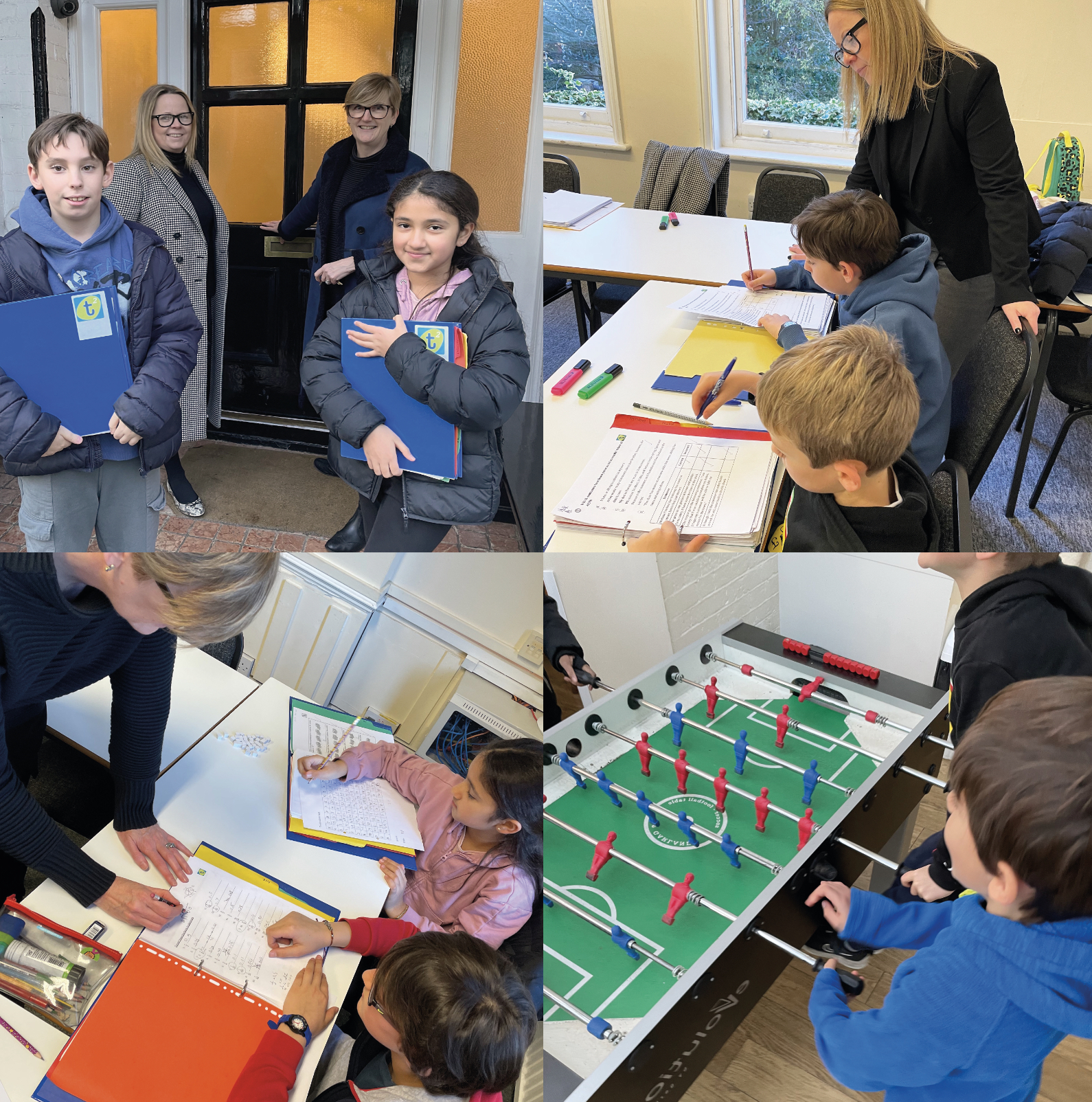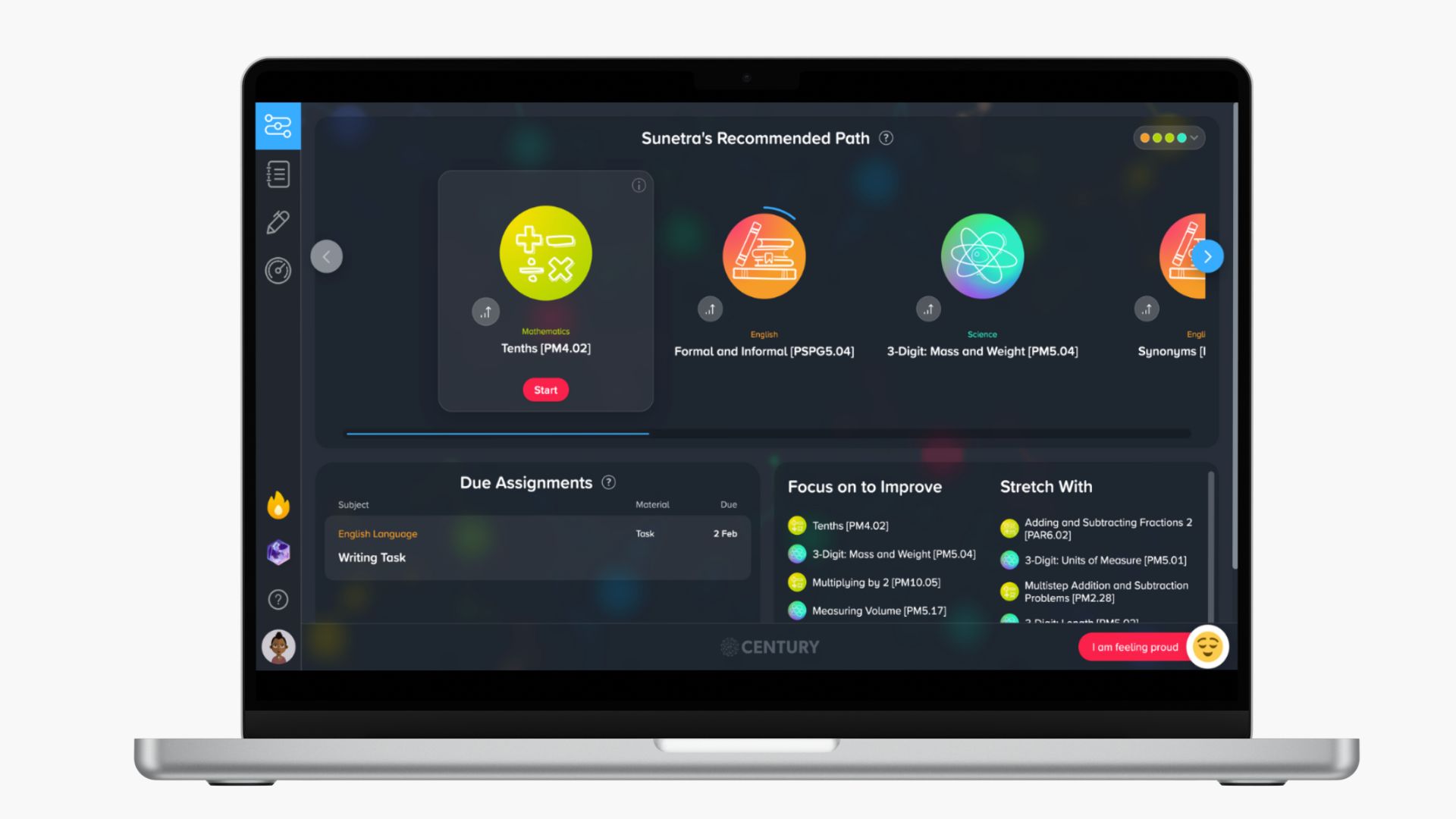Estimated reading time: 6 minutes
Cognitive Load Theory is a concept that has become increasingly popular in education, with many teachers starting to use its principles in their classrooms. If you are not already familiar with this theory, here is a quick rundown of what it is, its benefits, and how CENTURY has been designed with these key principles in mind.
Memory has several components: sensory memory, working memory and long-term memory. Before we get into the details of Cognitive Load Theory, we first need to take a look at how these different types of memory work.
Sensory memory is the storage of information received from our senses, for example seeing a dog or smelling roses, and it is transient, lasting for only several hundred milliseconds.
Information from sensory memory may be selected for temporary storage and processing in working memory, which is what holds new information in place for a little bit longer - up to roughly 20 seconds. This gives the brain enough time to connect it with other information.
Cognitive load refers to the amount of information that can be held by working memory at once.
Cognitive Load Theory was coined by educational psychologist John Sweller in 1998, and claims that our working memory can only hold a very limited amount of information at any given time, approximately three or four items’ worth of information, and that instructional materials must therefore be designed in a way that reflects how much we are able to remember.
The theory suggests there are three types of cognitive load that are being placed on the working memory during any learning experience.
Intrinsic load refers to the innate difficulty or complexity of a task for a particular learner, determined by a number of factors, including the inherent difficulty of a task, the level of interactivity of the task, and the prior knowledge of the learner. For example, adding and subtracting single-digit numbers has a lower intrinsic load (for most learners) than adding and subtracting fractions.
If intrinsic load is not properly managed, then learners can become overwhelmed. While any given topic’s inherent level of difficulty cannot be changed, intrinsic load can be reduced by breaking down the subject content, sequencing the delivery so that sub-tasks are taught individually before being explained together as a whole.
Germane load refers to the mental processing capacity for converting information into our long-term memory by linking new knowledge to existing knowledge.
Extraneous load refers to any cognitive effort that does not help the learner to achieve the desired learning outcome. The additional load can be imposed upon the learner as a result of poorly designed instructional materials that include visuals and text that don’t directly contribute to the learning goal, for example irrelevant animations or unnecessarily complicated vocabulary.
By reducing extraneous cognitive load, capacity is freed up in the learner’s working memory that can instead be taken up by intrinsic and germane cognitive load.
So, how have CENTURY’s resources been designed to manage cognitive load?
When designing learning materials, we focus on minimising extraneous load, managing intrinsic load and maximising germane load to ensure that as much relevant content as possible can be converted into the learner’s long term memory.
The design of CENTURY’s learning materials has been influenced by cognitive load theory, for example:
- To reduce extraneous cognitive load, we aim not to include unnecessary details that do not add value to the resource. For example, we do not use any images or text that serve no informational purpose, and you’ll notice that our videos never include background music.
- To manage intrinsic load, the AI-powered pathways on the platform ensure that each learner is working on the content that is of an appropriate level for them, and is not inherently too difficult. Information is segmented into manageable chunks – for example, our nuggets (micro-lessons) take an average of 15 minutes to complete, and hone in on our particular concept or piece of information.
- Signalling is often in our videos used to highlight important information, as you can see in the example above, which aims to reduce extraneous load and enhance germane load.
Book a demo to find out more about how CENTURY can help to enhance the teaching and learning at your school or college.
